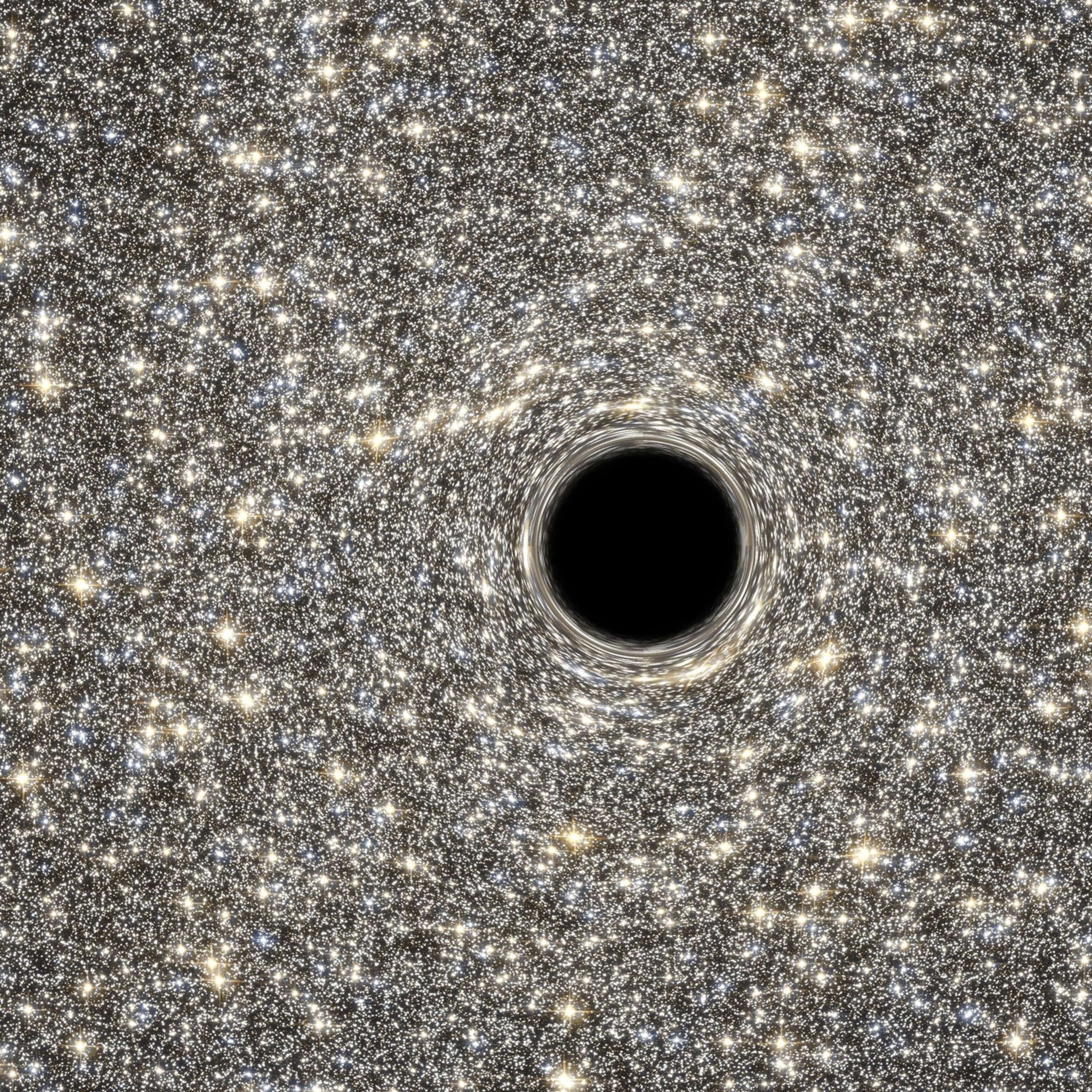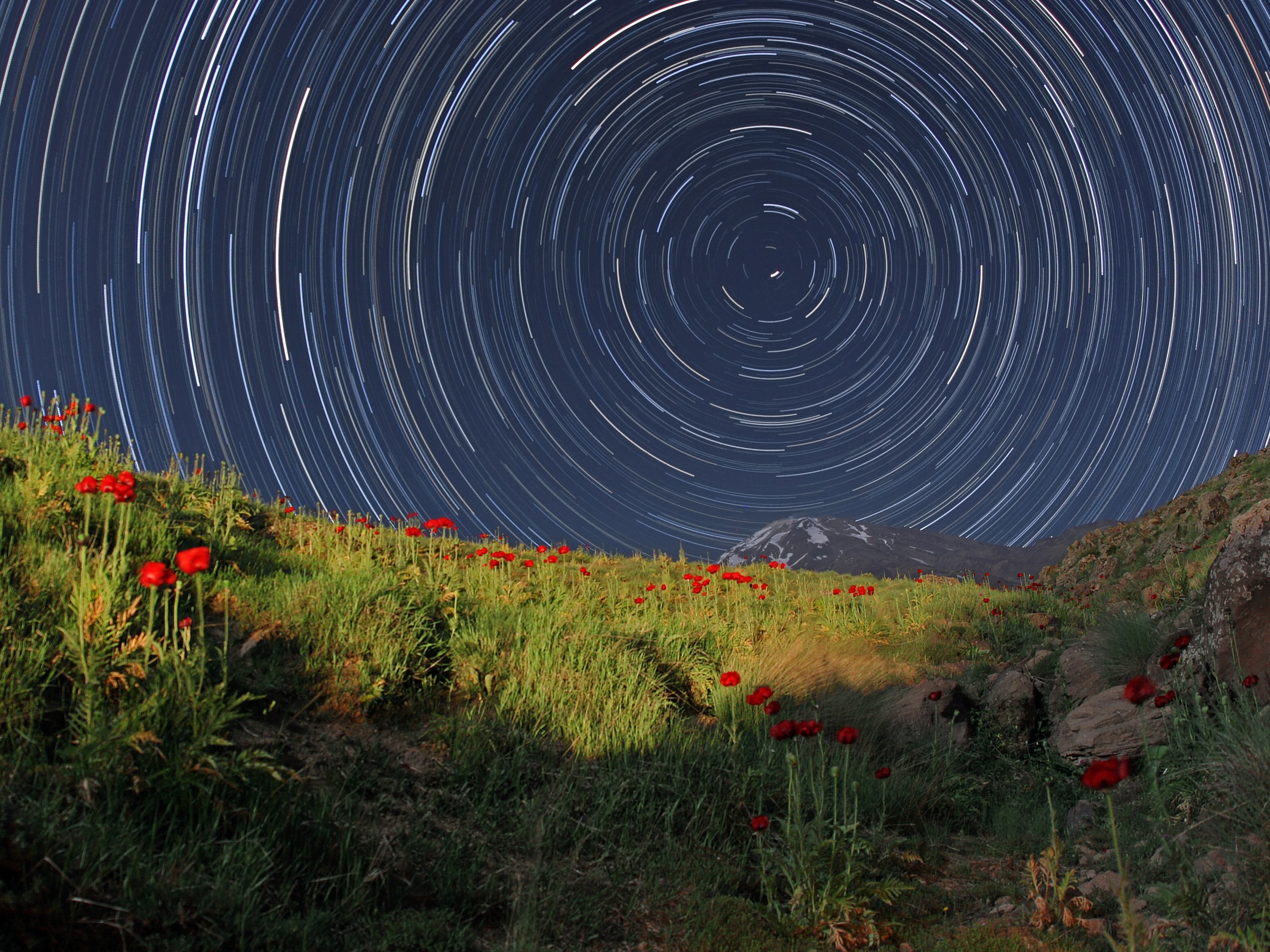![http://bccp.lbl.gov/eunhwa_webpage_2/simulation.html Cosmic String Simulations performed by the Cambridge Cosmology Group. Cosmic strings interact with each other by commuting, reconnecting, and forming loops. Cosmic strings are expected to have huge tension so as to make their motion relativistic. Vibrating string loops evaporate by emitting gravitational waves. As time elapses, long strings tend to straighten (compare long patterns in two different eras). The simulation shows that tens of long strings with cosmological length survive up to matter dominated era. Figure 3. String network simulations [7]. Simulations are performed in two different eras. Evolution of strings in matter dominated era. Each case the size of box is ~2ct.](https://i.natgeofe.com/n/ce5b6546-9031-4bd0-bdeb-091fc6aa0445/24163.jpg)
Space-Time "Wrinkles" Igniting Odd Gamma-ray Bursts?
Unusually short but intense "fireballs" in the distant universe may be triggered by vibrating cosmic strings, a new study says.
Unusually short but intense "fireballs" in the distant universe might be created by the plucking of invisible cosmic strings—ultradense flaws in space-time—a new study suggests.
Gamma-ray bursts are flashes of the most energetic form of light. The bursts happen about once a day somewhere in the universe, and some are so intense they can be seen even when they originate at the very edges of the observable universe, about 13 billion light years away. (See a picture of a gamma-ray burst that was visible to the naked eye.)
Some gamma-ray bursts stay visible for several seconds to a few minutes. Scientists think these long-duration bursts are created when the cores of very massive stars collapse and explode. (Related: "Ultrabright Gamma-ray Burst 'Blinded' NASA Telescope.")
Other bursts are much more brief—sometimes lasting just fractions of a second—and it's unclear what triggers them.
But two perplexing gamma-ray bursts spotted in 2008 and 2009 by NASA's Swift satellite were unlike anything physicists had seen before: The gamma ray flashes were short—each lasting less than two seconds—but much more powerful than other similarly brief bursts.
It's possible the odd gamma-ray bursts are coming from the vibrations of superconducting cosmic strings, according to a new theory developed by University of Hong Kong physicist K.S. Cheng and colleagues.
Cosmic Strings Create Space "Fireballs"
Cosmic strings are theoretical wrinkles in space-time, each about the width of a proton but with extreme density. (Related: "Proton Smaller Than Thought—May Rewrite Laws of Physics.")
According to theories of high-energy particle physics, the strings would have been created when matter in the very early universe went through what's called phase changes, such as when liquid water freezes to become solid ice.
Cosmic strings, the theories state, are imperfections in space-time akin to the cracks that form as water freezes.
Although there is no observational evidence for cosmic strings, most theories predict that the strings should stretch through the universe to its horizon.
"You can picture a cosmic string as an extremely long conducting wire with the same length-scale of the universe," Cheng said.
On Earth, if a wire made of electrically conducting material vibrates within a magnetic field, the motion will generate an electrical current in the wire.
It's possible, Cheng said, that cosmic strings oscillate like plucked guitar strings in a universe filled with magnetic fields from large-scale structures such as galaxy clusters. (Related: "Bulk of Missing 'Normal' Matter Found in Cosmic Web.")
"Thus there are hundreds of millions of small-scale wiggles on the string," Cheng said, which in turn create a large number of closed electromagnetic loops of different sizes.
Charged particles get trapped in those loops and become incapable of scattering or slowing down, making the loops superconductors, or material that offers no resistance to electricity.
At times, string movements cause the superconducting loops to snap with rapid, whip-like motions—producing bursts of low-frequency light waves.
According to the new theory, "the energy of [these waves] is absorbed by the surrounding plasma," or charged gas in interstellar space, said study co-author Yun-Wei Yu of the Institute of Astrophysics at Huazhong Normal University in Wuhan, China.
The extra energy would cause a burts of plasma to shoot out at nearly the speed of light.
"As a result, the brief but intense [gamma-ray burst] we see would be produced by the accelerated plasma—an ultrarelativistic fireball."
Cosmic Strings Also Sources of Gravity Waves?
For now, the existence of cosmic strings is purely theoretical. But if the new theory is correct, studying gamma-ray bursts could be a way to learn more about the nature of cosmic strings.
Cosmologist Alexander Vilenkin of Tufts University says the idea begs for more research, but the concept would be an exciting development if the theory were ever confirmed.
"Not only would we know that cosmic strings exist, we would also know how massive they are and that they are superconducting," said Vilenkin, who was not involved in the new research. "This in turn would tell us a great deal about the underlying particle physics" of the universe.
But there are some sticky questions still to be solved, Vilenkin said.
"Cosmic strings can produce [gamma-ray bursts] only in the presence of magnetic fields. Cheng and collaborators assume these fields to be relatively strong and concentrated in cosmic walls"—huge superclusters of galaxies that are the largest-scale structures in the universe, he said.
"Moreover, they assume the fields were already in place at the time of [the bursts]. This is far from being clear: The origin and distribution of cosmic magnetic fields are poorly understood."
Still, scientists may already have the tools to find out if cosmic strings really are churning out short, powerful gamma-ray bursts.
Vibrating cosmic strings would produce not only gamma-ray bursts, but also accompanying bursts of gravitational waves—ripples in the fabric of space-time first predicted by Albert Einstein, Vilenkin said. (Related: "New Type of Cosmic Object to Be Revealed?")
If so, operational observatories such as the Laser Interferometer Gravitational-Wave Observatory, or LIGO, might be able to detect the characteristic signatures of plucked cosmic strings—and pinpoint the potential sources of unusual gamma-ray bursts.
The cosmic-strings study appears in the June issue of the journal Physical Review Letters.








